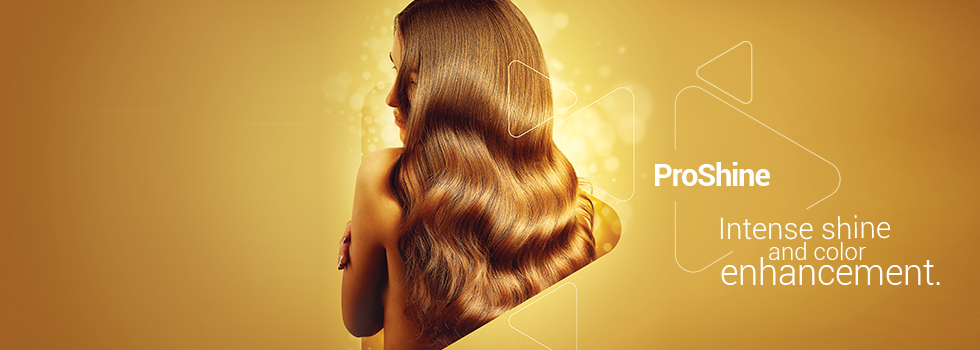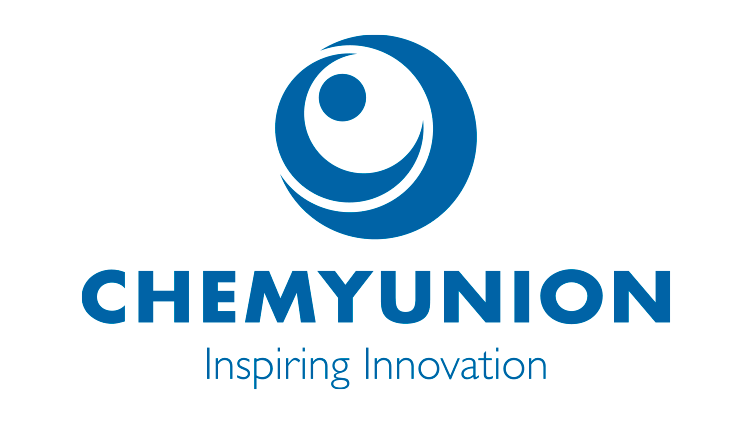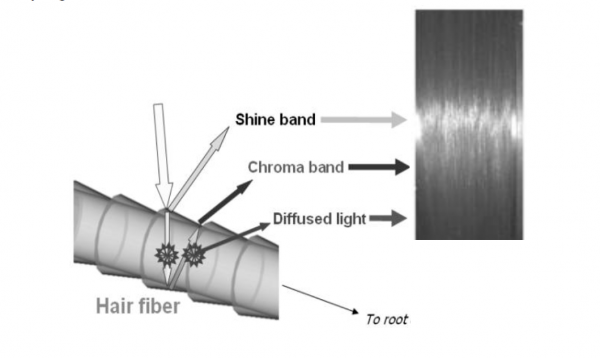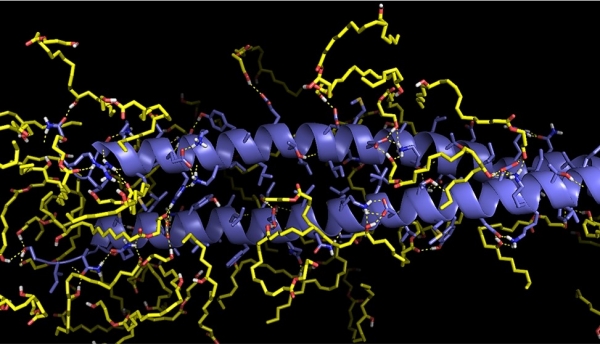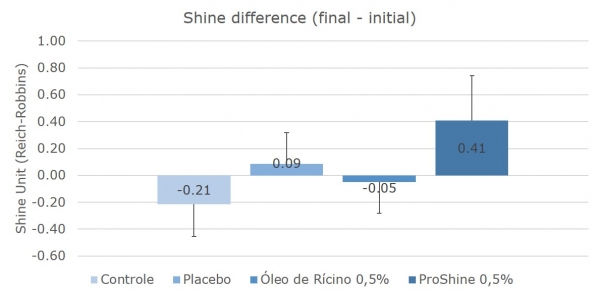Promotional Features
ProShine by Chemyunion
Hair can be a reflection of someone’s personal style, and even their beliefs. In addition to being a structure that has functional significance, hair is important both emotionally and socially, and can have a direct impact on self-esteem.¹
Healthy hair involves the appearance of several important attributes, such as shine, color, shape, smoothness, volume, ease of combing and styling. Shine’s natural association with clean and healthy hair makes it one of the most important and noticeable benefits.2,3,4
A survey carried out by Mintel’s GNPD shows that after the “Botanical or Natural” appeal, “Shine” is the most promoted attribute in hair care launches around the world – representing 40% of claims in the last 9 years. In addition, shine may be responsible for up to US$ 40 billion over the next two years.5,6
The perception of shiny hair is related to multiple factors, including cleaning of the hair fiber, uniformity, integrity of the cuticles, extent of damage, both on the surface and in the inner structures of the fibers, color, morphology, hair density on the scalp and the alignment of fibers. The more aligned and uniform the hair cuticles are, the better the surface for the reflection of light and the greater the perception of shine.7,8
The perception of brightness happens when an object reflects more light at a specific angle or direction rather than at different angles and directions. Under this scenario, the contrast of the shine appears and the object is seen as shiny. It is widely understood that the visual perception of hair shine is related to three types of interactions of light with the hair fiber as illustrated by Figure 1.7,8
Figure 1. Reflection bands form when the light falls on the strands of hair.7
The first and brightest component is called the first reflection shine band. The more intense, narrow, and concentrated the band is, the greater the shine. The second component is called the chroma band. The width of this band is greater than the width of the shine band due to the reflection and two separate refractions of the light. The third component is called diffused light. The darker the background tone, the greater the contrast of the reflection and the greater the shine.3,7,8,9
Although there are several alternatives for developing shine, the cosmetic industry is currently looking for more sustainable and biodegradable alternatives for the development and production of cosmetic products that make hair shiny. The concern with environmental issues has directly influenced the search for alternative synthetic routes that adopt the concept of Green Chemistry, a term developed by chemists Paul Anastas and John Warner of the Environmental Protection Agency (EPA) and which is defined as the use of twelve principles aimed at reducing or eliminating the use or generation of substances harmful to human beings and the environment, both in the design and in the manufacture and application of products.10,11,12,13
Faced with the challenges of meeting market demands and combining the effectiveness of an active with obtaining routes that incorporate the principles of green chemistry, Chemyunion developed ProShine, an active based on plant esters with a high refractive index, which activates intense hair shine and enhances the color when interacting with hair fiber proteins.
ProShine was developed based on a study of the molecular structure of actives considering three elementary properties to obtain a good hair shine performance: the refractive index, the reflection index, and the intermolecular interactions between the hair fiber cuticle with the chemical functions present in the molecules.
Composition and technical specifications:
ProShine comes from plant-based and biodegradable esters with a high refractive index, and developed to interact with hair proteins to activate an intense shine on the hair fiber.
Table 1: ProShine technical specification
Action mechanism:
ProShine forms a molecular film with a high refractive index and held on by intermolecular interactions between ProShine and the main keratin structures of the hair fiber (tyrosine, arginine, lysine, and aspartic acid). This interaction occurs due to hydroxyls present in its molecule, which interact properly with hair keratin, hydrogen bonds, dipole-dipole, and London dispersion forces, as can be seen in Figure 2. Among these interactions, hydrogen bonds stand out.
Figure 2: Intermolecular interactions between ProShine and the amino acid residues of keratin present in the hair fiber:
(a) tyrosine, (b) arginine, (c) lysine, and (d) aspartic acid.
Efficiency:
Three tests were performed on bleached hair strands. The first was treated with placebo shampoo. In the second, shampoo with 0.5% castor oil. The third test used shampoo with 0.5% ProShine. All were kept in a room with controlled temperature and humidity (23 °C/50% relative humidity) for 24 hours before testing was started. The entire testing period was carried out under the same environmental conditions. The evaluation of hair shine was performed in three strands per group (6 measurements per strand), before and after treatment, using the SAMBA Hair System equipment from Bossa Nova Technologies, USA. The SAMBA system software calculates the shine simultaneously using different formulas. For this study, the analysis data obtained by the Reich-Robbins formula was used.
The result described in Table 2 showed that ProShine delivers 455% more shine to the hair after shampooing. It also was able to deliver amazing results in treatments with conditioner, leave-in, and finishers in various situations such as virgin, bleached or dyed hair.
Table 2: Evaluation of shine in bleached hair strands washed with shampoo containing 0.5% ProShine compared to placebo and castor oil.
*Significant increase compared to Control (P<0.001), Placebo (P<0.01), and Benchmark (P<0.001).Significant increase compared to Control.Application:
Shampoos, conditioners, hair masks, leave-on, styling creams, and finishing products Stable and compatible with anionic, cationic, and non-ionic bases and synergy with oils and esters.
Shampoo 0.5-1.0% and from 1% in other formulations.
-----
References:
- Andrade, S.R. Auto-estima, cabelos e nutrição. Universidade Estadual de Maringa. 2008-2009.
- Nogueira, A.C.S. Efeito da radiação ultravioleta na cor, na perda proteica e nas propriedades mecânicas do cabelo, Dissertação de mestrado, Universidade Estadual de Campinas, 2003
- Robbins, C.R. Chemical and Physical Behavior of Human Hair 5th Edition, 2012
- Dias, T.C.S. Análise da ação condicionadora de substâncias cosméticas adicionadas em alisante capilar à base de tioglicolato de amônio, Dissertação de mestrado, Universidade de São Paulo, 2004.
- Mintel GNPD. Available at: < https://www.mintel.com/global-new-products-database>. Accessed on Wednesday, February 03, 2021
- IMARC GROUP. Available at: <https://www.imarcgroup.com/global-hair-care-market>. Visited on May 7, 2021.
- Lefaudeux, N.; Lechocinski, N.; Clemenceau, P.; Breugnot, S. New luster formula for the characterization of hair tresses using polarization imaging, Third Annual Conference on Applied Hair Science, September, 2008.
- Rizvi, S.N.I.H. Physical and Computational Models of the Gloss Exhibited by the Human Hair Tress. A Study of Conventional and Novel Approaches to the Gloss Evaluation of Human Hair. Tese de Doutorado. Universidade de Manchester. 2013.
- McMullen, R. and Jachowics, J. Optical properties of hair: Effect of treatments on luster as quantified by image analysis. J. Cosmet. sci., 54, 335-351, July/August, 2003.
- NAGASE, S. Hair Structures Affecting Hair Appearance, Cosmetics, 6, 2019, 1-15
- DOC Japan co. ltd. Cosmetic conditioning oil composition and cosmetic product US 9,987,210 B2, 5 Jun. 2018
- CHEN, H. KIM, S.-Y. PAN, et al., Implementation of green chemistry principles in circular economy system towards sustainable development goals: Challenges and perspectives, Science of the Total Environment (2020)
- ANASTAS, P.; EGHBALI, N. Green chemistry: principles and practice. Chemical Society Reviews, v. 39, n. 1, p. 301-312, 2010
